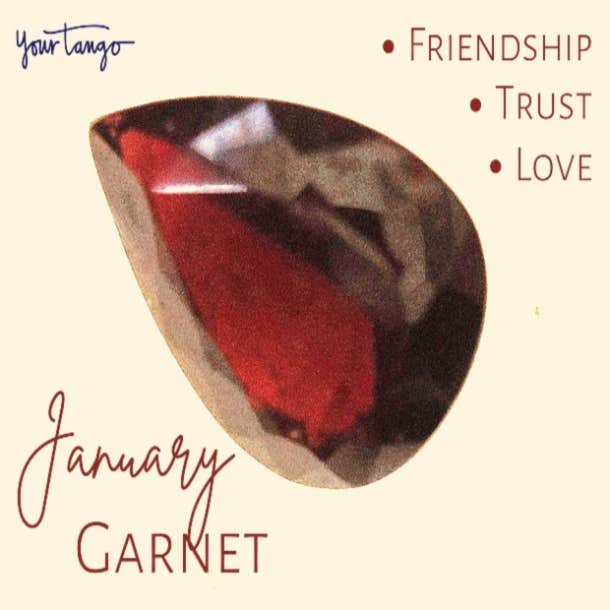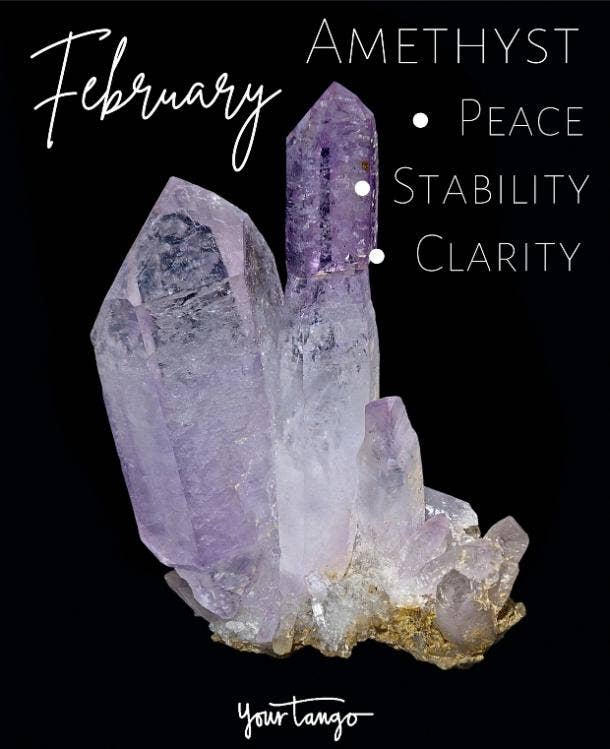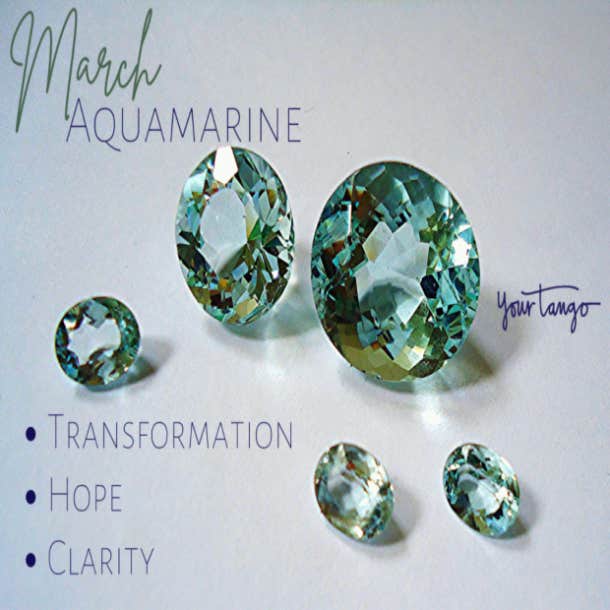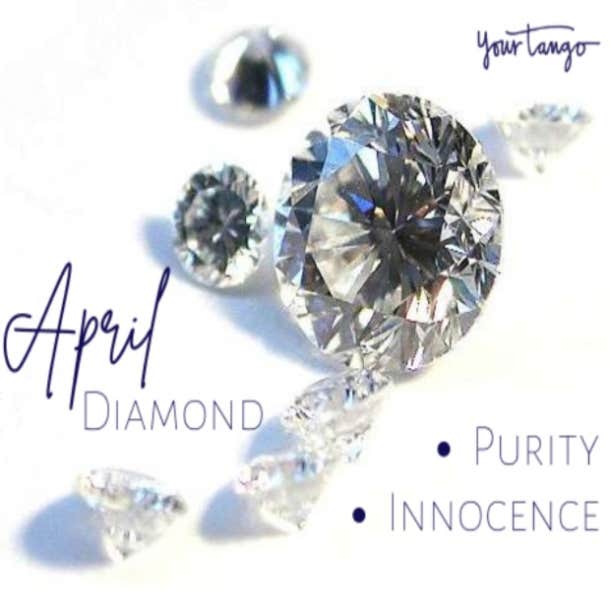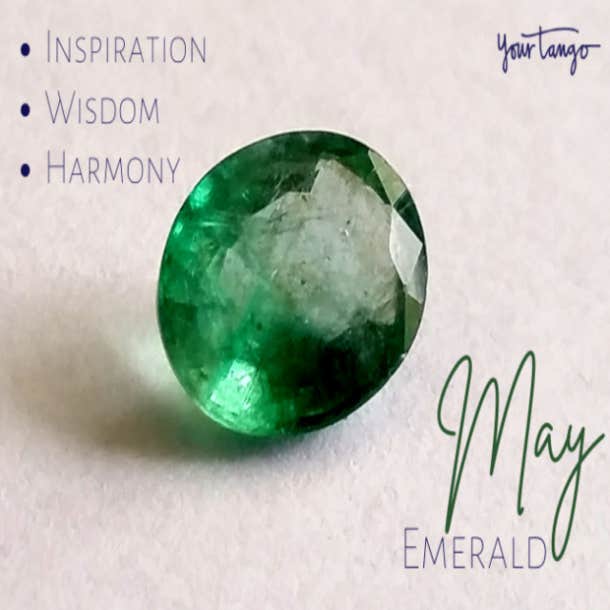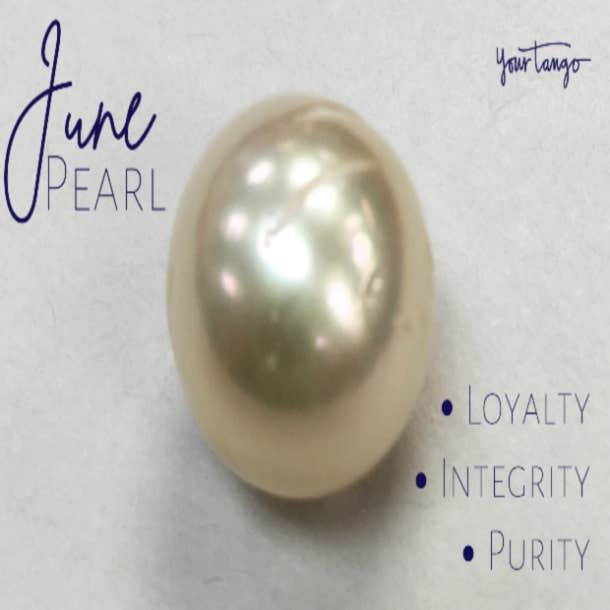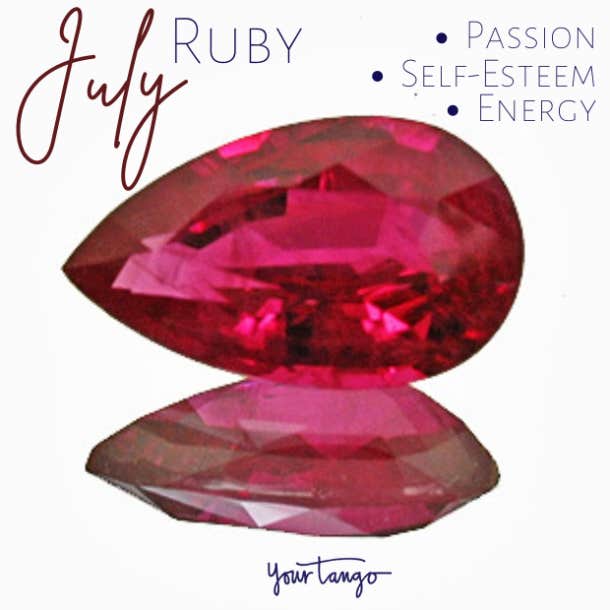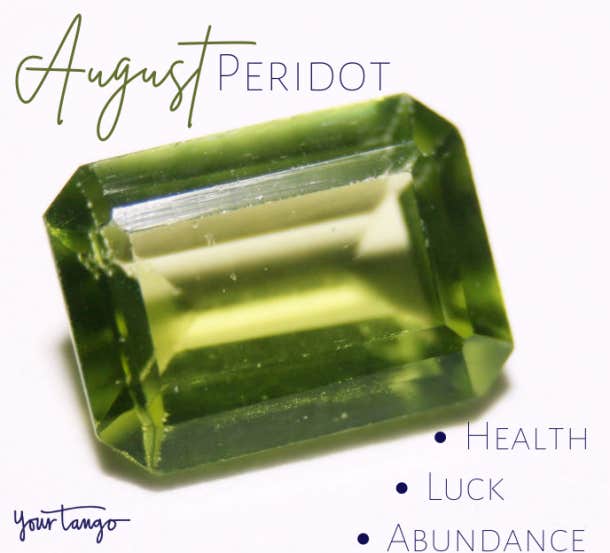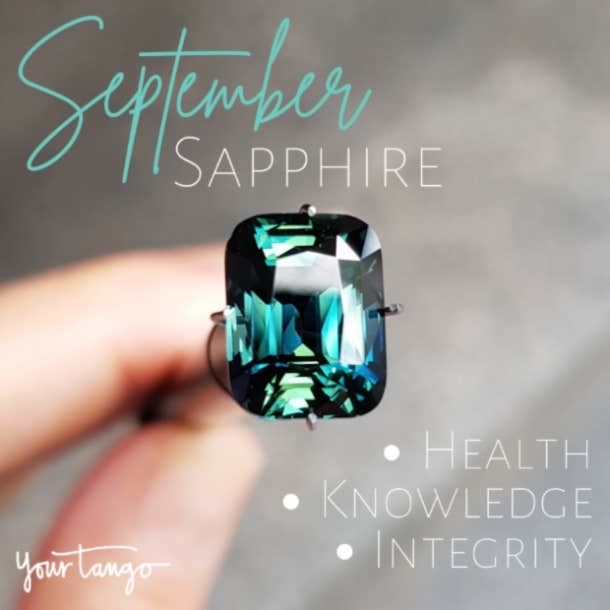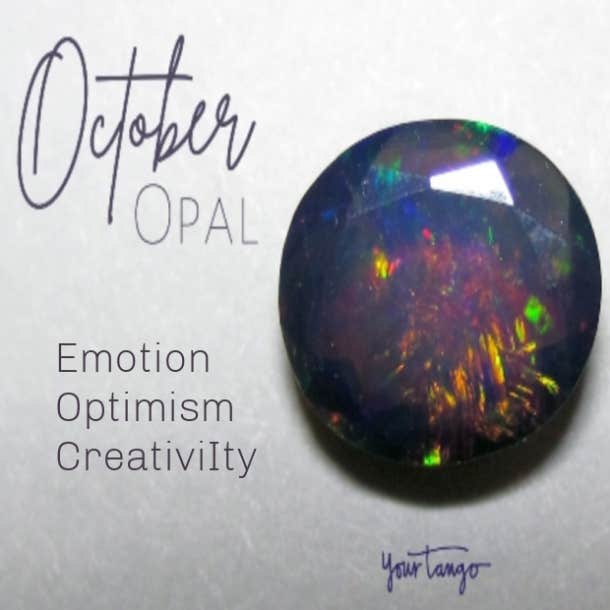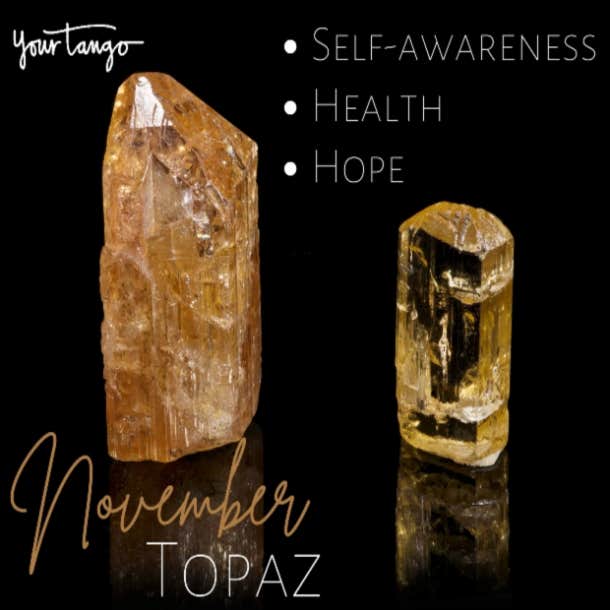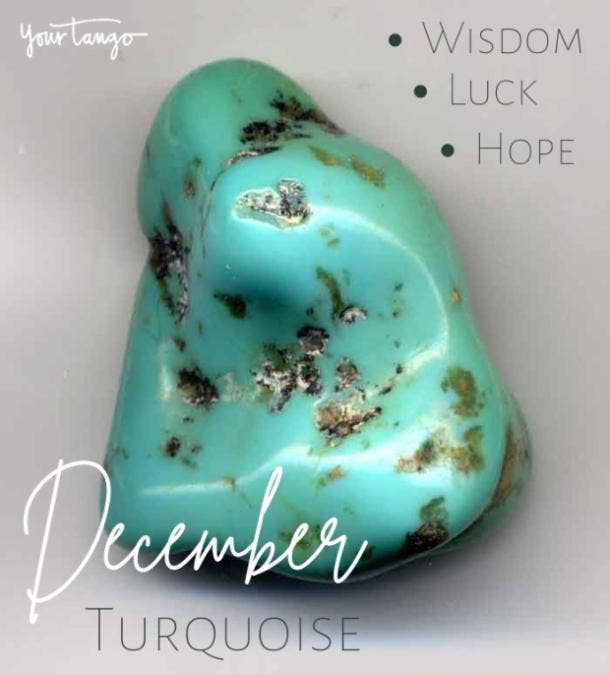Forming deep in the Earth for centuries, birthstones are more than just something pretty to throw on. They represent qualities and traits unique to your birth month. RELATED: 8 Easy Ways To Cleanse & Charge Crystals (That Make Them More Powerful) Birthstones come in many forms and make great gifts for the ones you love, so they can cherish a piece of jewelry made just for them. While stones can sometimes vary depending on the month, with specific months having more than one, your birthstone reveals a lot about the month in which you were born. If you want to learn more about your birthstone or that of a loved one, find out everything you need to know about each of these precious stones.
List of Birthstones By Month and the Meanings of Each
January Birthstone: Garnet
Photo: Mauro Cateb / Wikimedia Commons Garnet meaning: Friendship, trust, and eternal love Hardness: 6.5-7.5 Many ancient cultures also believed that garnets had a special protective ability. Its deep red color is associated with blood and the heart, which is why the stone is considered a symbol of love. Typically, the red garnet stone is associated with this birth month, though this gem is actually available in almost every color including green (tsavorite and demantoid), orange (spessartine and hessionite), purple (rhodolite), yellow (mali and topazolite), pink (malaya), red (almandine and pyrope), and black (melanite). Different colors of the stone are mined across Africa, but the deep red gem is often found in Côte d’Ivoire. The word Garnet derives from the 14th century where “gernet” meant a deep red color, and from the Latin word “granatum,” which means seed; in this instance, the seed of a pomegranate.
February Birthstone: Amethyst
Photo: Didier Descouens / Wikimedia Commons Amethyst meaning: Peace, stability, and clarity Hardness: 7 Wear this stunning purple gem to the club if you want a night out without any damage! The ancient Greeks believed this stone prevented people from getting drunk, naming it after the Greek word “amethystos,” meaning “not intoxicated.” You could also consider it a symbol of clarity. These stones range from a light purple to a shade so dark it’s almost opaque. Amethysts often appear in royal crowns and are used in sacred Buddhist prayer beads in Tibet. You’ll find amethysts across the globe because it’s a derivative of quartz, one of the most common minerals in the world. Many of the world’s amethyst mines are found in Brazil and Uruguay.
March Birthstone: Aquamarine
Photo: Mauro Cateb / Wikimedia Commons Aquamarine meaning: Transformation, hope, and clarity Hardness: 7.5-8 Those lucky enough to be born in March will have this calming stone to fawn over. Named after the words “aqua” for water and “marina” for sea, this stone symbolizes the calming power of the deep blue sea. The stone is thought to activate courage, and in Greek and Roman times, it was given to sailors to protect them on voyages. The stone is derived from the mineral, beryl, which ranges from a very light, almost imperceptible blue to a rich, deep blue. Brazil is an important source of aquamarine. Other sources include Afghanistan, Burma (Myanmar), China, Kenya, Madagascar, Mozambique, Ukraine, and the United States.
April Birthstone: Diamond
Photo: Mauro Cateb / Wikimedia Commons Diamond meaning: Purity and innocence Hardness: 10 Though this stone is sought after by many, it traditionally belongs to those born in April. As one of the hardest minerals in the world, they are one of the rarest and most sought-after gems. As most diamonds naturally have a hint of yellow in them, it’s often more affordable to purchase colored versions of the stone. In Renaissance times, they were given as engagement rings and had a resurgence in the 20th Century, thanks to world-renowned diamond dealers, De Beers. Diamonds are mined in Australia, Botswana, Brazil, China, Congo, Russia, and South Africa.
May Birthstone: Emerald
Photo: DonGuennie / Wikimedia Commons Emerald meaning: Inspiration, wisdom, and harmony Hardness: 7.5-8 Emeralds were once associated with magic, their presence thought to help magicians see visions. Today, people still use emeralds to increase psychic sensitivity and open the third eye chakra. Another rare stone, pure emeralds can often cost more than a diamond, resulting in many lab-grown options for birthstone jewelry. They are loved for their deep green color, which is hard to come by in gems. Emeralds occur when beryl picks up its green color from trace amounts of chromium or vanadium, along with trace amounts of iron. Cleopatra was known to adore this gem, claiming ownership of every emerald mine in Egypt during her reign. Today, emeralds are commonly mined in Brazil, Colombia, Zambia, and Afghanistan, where they must undergo intense heat treatment to reveal their green color.
June Birthstone: Pearl
Photo: James St. John / Flickr Pearl meaning: Loyalty, integrity, and purity Hardness: 2.5-4.5 Many cultures believe pearls symbolize inner wisdom, encouraging the journey to self-discovery. Pearls have a feminine energy, which promotes balance and harmony. Unlike all other mineral birthstones, the pearl comes from a living organism, mollusks. This means they are more delicate than other birthstones. Mollusks layer calcium carbonate around sand grains sequentially over time to form the white bead. This process can take over 3 years, though some cheaper versions are made more quickly in pearl farms by inserting seeds into mollusks in order to get them to deposit layers around it. Most pearls come from southern China, Indonesia, the Philippines, and Australia. RELATED: The Crazy Things Your Birth Month Reveals About Your Personality And Love Life
July Birthstone: Ruby
Photo: Wiener Edelstein Zentrum / Wikimedia Commons Ruby meaning: Passion, self-esteem, and energy Hardness: 9 This stunning red gem decorates July birthdays. Rubies are one of the four precious stones alongside diamonds, sapphires, and emeralds. Rubies range in color from orangy-red, to red, to slightly purplish-red, and derive from the Latin word for red, “rubeus.” Because of their red color, unsurprisingly, these gems symbolize blood, life, and vitality. Ruby is also thought to aid in opening the heart chakra. The rarity of these gems prompted many synthetic replicas to be created since the 1900s; however, recent ruby discoveries in Africa have brought natural rubies back to the market at an affordable price. Burma is one of the most famous ruby-mining locations in the world. The stone is so important there that traditional Burmese warriors would implant rubies into their skin to protect them in battle.
August Birthstone: Peridot
Photo: Michelle Jo / Wikimedia Commons Peridot meaning: Health, luck, and abundance Hardness: 6.5-7 Peridot is one of the most ancient stones in the world. It’s associated with the solar plexus chakra and is often used in spiritual practices to balance the mind and body and boost creativity. Unlike the deep-toned emerald, August births can enjoy this bright, vibrant, glowing green at a much more affordable price. Peridot is typically found in igneous rock, basalt, which is formed from volcanic eruptions. It’s no surprise then that this gem is commonly found in Hawaii, even in crystal forms on the beaches there. According to Hawaiian folklore, the gem comes from the tears of the volcano goddess Pele. The word itself is possibly derived from the Greek word, “perodana,” meaning “giving plenty.” The San Carlos Reservation in Arizona produces most of the world’s gem-quality peridot.
September Birthstone: Sapphire
Photo: YippeeD / Wikimedia Commons Sapphire meaning: Health, knowledge, and integrity Hardness: 9 Sapphire is thought to help calm the mind, promoting focus and intuitiveness. Sapphire’s energy is often used in spiritual practices to help balance the mind and prevent overthinking and other negative thought patterns. Sapphire is known for its enchanting blue and takes its name from the Latin word “sapphirus,” meaning (you guessed it!) “blue stone.” It comes from the mineral corundum, which also forms rubies when it has a red inflection. Its blue color was used to symbolize holiness for many Western royal families and also represents wisdom. Rulers used to wear sapphire during treaty negotiations due to its connection to wisdom and integrity. Kashmir, in India, is known for producing some of the deepest blue sapphires in the world, but you can also find sapphire mines in Australia and Madagascar.
October Birthstone: Opal
Photo: James St. John / Wikimedia Commons Opal meaning: Emotion, optimism, and creativity Hardness: 5.5-6.5 Opal is thought to intensify the mood of the wearer, encouraging freedom of expression and creativity. Many ancient cultures believed the opal had healing and protective properties. Opal comes from the Greek word “opallios,” translating as “to see a change in color.” This is probably because this stone has a unique ability to shift shades when the light hits it. Opal forms when water picks up silica dioxide and deposits it into open voids or cavities in rock along with trace impurities. Opal occurs many different varieties. Black opals come from Australia, and there are also fire opals from Mexico, honeycomb opals from Ethiopia, and colorful common opals from Peru.
November Birthstone: Topaz
Photo: Didier Descouens / Wikimedia Commons Topaz meaning: Self-awareness, health, and hope Hardness: 8 Topaz is thought to have the most loving energy of all of the birthstones. It is used to open and stimulate the mind, promoting truth, inspiration, and confidence. Topaz is named after the Greek name for St. John’s Island located in the Red Sea, Topazios, because yellow gems were mined on this island; however, geologists now assume they were likely not topaz. In its pure form, this gem is clear but commonly picks up a wide range of hues from impurities. Though it’s most often a yellow stone, it’s possible to find natural and treated pink, purple, blue, and brown versions of the stone. Most of the world’s topaz comes from Brazil, but it’s also produced in Russia, Sri Lanka, the United States, India, Pakistan, Nigeria, Mexico, Germany, and Australia.
December Birthstone: Turquoise
Photo: Adrian Pingstone / Wikimedia Commons Turquoise meaning: Wisdom, luck, and hope Hardness: 5-6 Turquoise is a powerful stone thought to provide strength and protection as well as inner peace. Blue-green in color, turquoise is such a unique shade that it’s a color of its own. This blue color is also associated with calming emotions. As it’s opaque, it can be cut into freeform shapes to take full advantage of the stone. The word is derived from Old French for “Turkish stone.” Mined near Nishapur in the Khorasan region of Persia, this gem was originally brought to Europe through Turkey. Native Americans in the southwestern United States were using this stone over 2,000 years ago to produce beads, pendants, inlay work, and small sculptures. It embodies wisdom and luck, often worn as a form of protection from harm. Outside of the US, you can mine this stone in China, Chile, Egypt, Iran, and Mexico. RELATED: Your Birth Month Flower & What It Means Alice Kelly is a senior news and entertainment editor for YourTango. Based out of Brooklyn, New York, her work covers all things social justice, pop culture, and human interest. Keep up with her on Twitter for more.
